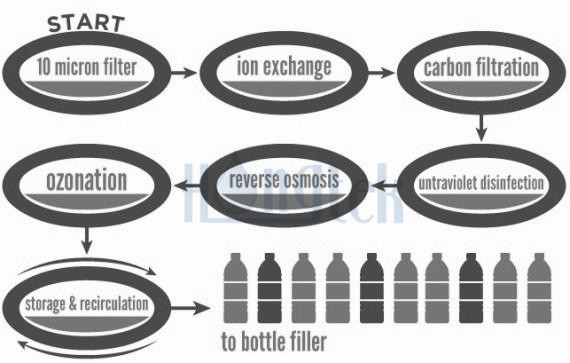
The unique filtration technology can make bottled water healthier for people. So how does bottled water treatment work? The following is each step for bottled water purification.
PP Melt Blow Filter Cartridges, Pleated Cartridge Filters, High Flow Filter Cartridges are aim to remove the large particles which may be present in the water-things like dirt, sand, slime and grit. In case these large particles could foul or clog the more sensitive equipment used at later stages.
2. Ion exchange
For softening and deionization of boiler feedwater has been used extensively with very positive results. In boiler water treatment total hardness and total dissolved solids need to be reduced which is where ion exchange is used.
Activated Carbon Filters which utilizes a process known as adsorption, is a particularly effective technique for chlorine removal. Pesticides, herbicides, and other organic contaminants (especially volatile organics) are also removed at this stage.
4. Ultraviolet Disinfection
Ultraviolet light will kill any bacteria, viruses, or other microbiological contaminants which are present in the water. This process will destroy the genetic material within these organisms, eliminating the possibility of bacterial or viral reproduction and proliferation.
5. Reverse Osmosis
Water is forced under high pressure to pass through a membrane, leaving contaminants behind. This process removes all microbes, minerals, color, turbidity, organic and inorganic chemicals. This filtration precision is much higher than before Water Filter Cartridges used on the first Microfiltration.
6. Ozonization
Ozonation relies on oxygen to ensure that our purified water remains free of any possible microbiological contamination. Using ozone to kill most microbes, depending on dosage applied.
7. Storage
This storage and recirculation system has been designed so that water will retain its exceptionally high purity and will not come into contact with any materials or substances which could in any way compromise the quality of the water.
8. Recirculation
A term can be used interchangeably with deionization. Both refer to the elimination of dissolved solids through ion-exchange.